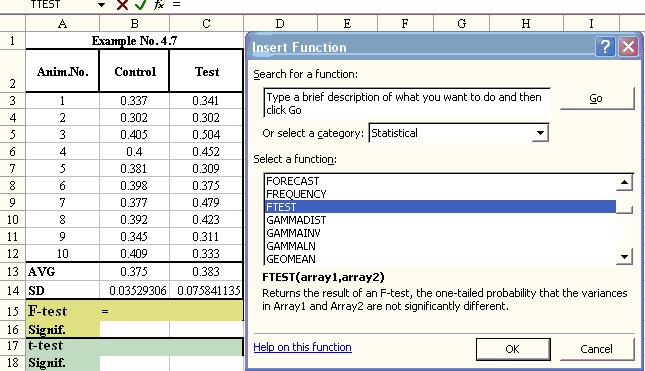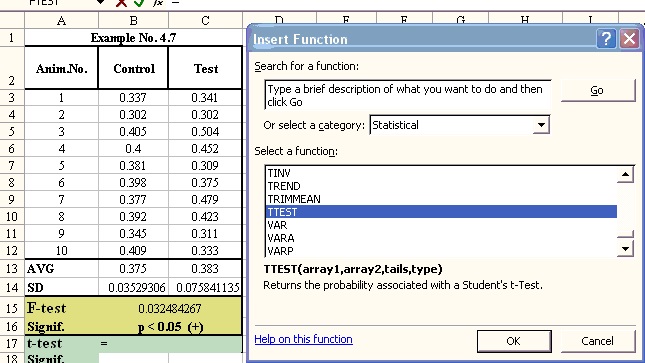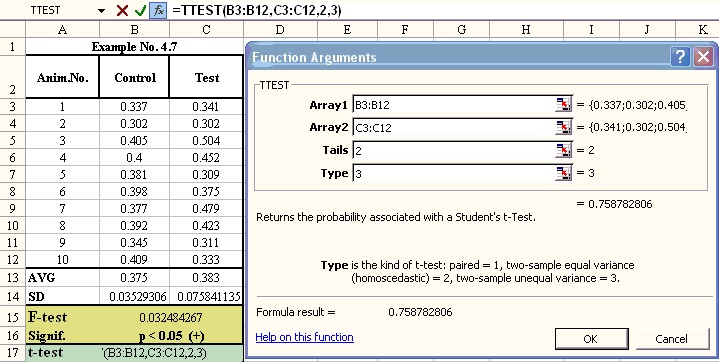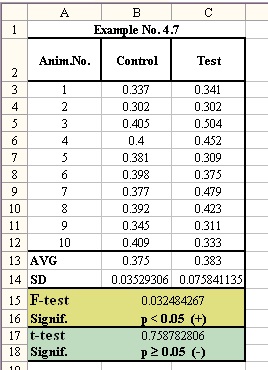
MS Excel - Example No. 4
1. Input sample data into a table (cells B3:B12 and C3:C12); calculation of mean value (average) of samples: in the cell B13 and C13 call menu Insert - Function - Statistical - AVERAGE; calculation of standard deviation (SD) for sample data: in cell B14 and C14 call menu Insert - Function - Statistical - STDEV (see examples 1, 2).
F-test calculation: in the cell B15 call menu Insert - Function - Statistical - F-test:

2. Into field Array 1 in dialog window input cells for calculation - B3:B12 , into field Array 2 input cells C3:C12 (it is possible to mark them by means of mouse), push the button OK to get result:

3. Result of F-test: p=0.03248 indicates the probability of null hypothesis about homogeneity of variances (= probability of a error). As calculated p < 0.05, it means that difference between variances is statistically significant (H0: s1=s2 is not true).
Calculation of unpaired t-test: in the cell B17 call menu Insert - Function - Statistical - TTEST:

4. Into field Array 1 in dialog window input cells for calculation - B3:B12, into field Array 2 input cells C3:C12 (it is possible to mark them by means of mouse), in Tails: 2, in Type: 2 (Two-sample unequal variance - according to the result of F-test); push the button OK to get result:

5. Displayed results of calculations:

6. Result of t-test: p=0.75878 indicates probability of null hypothesis about equality of means (= probability of a error). As calculated p > 0.05, it means that difference between tested means is statistically insignificant.
Conclusion: As the difference between means of control and test group is statistically insignificant (p>0.05), preparation doesn´t influence AST level in blood serum of dairycows.